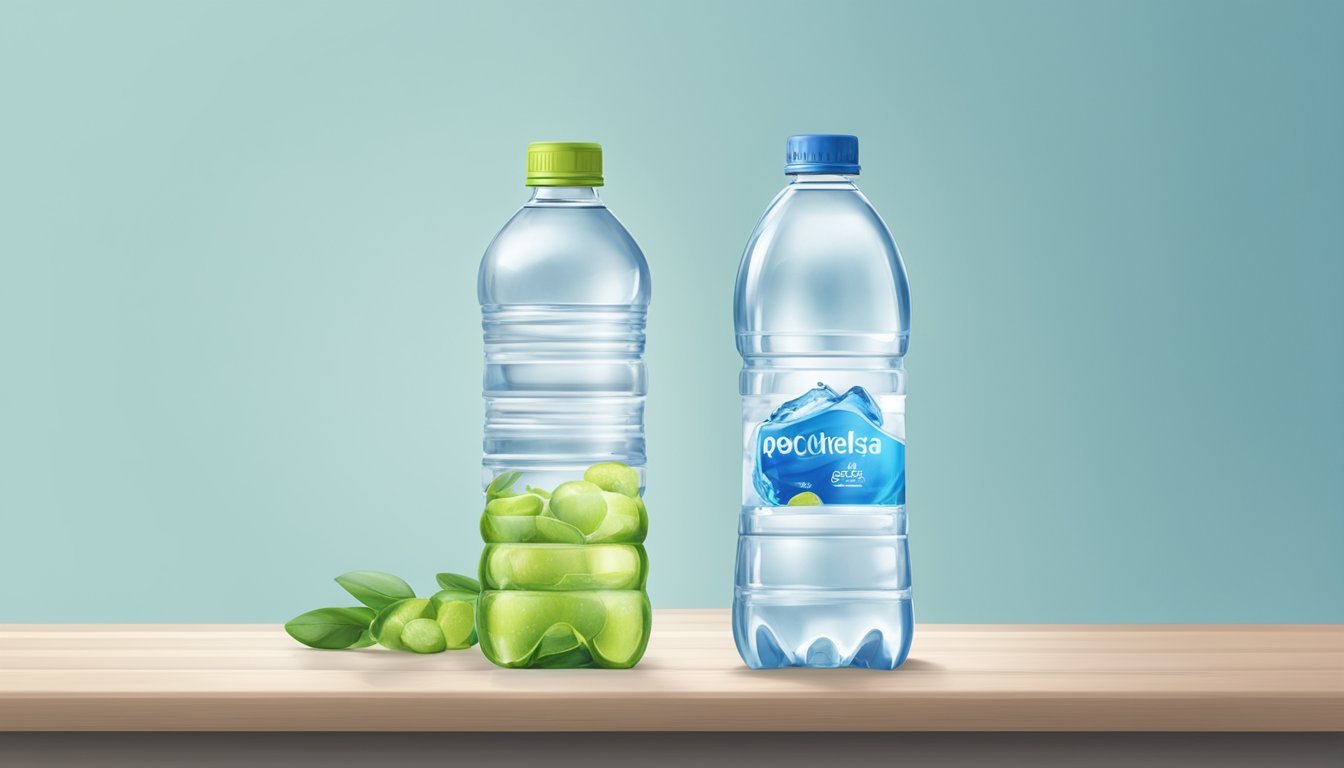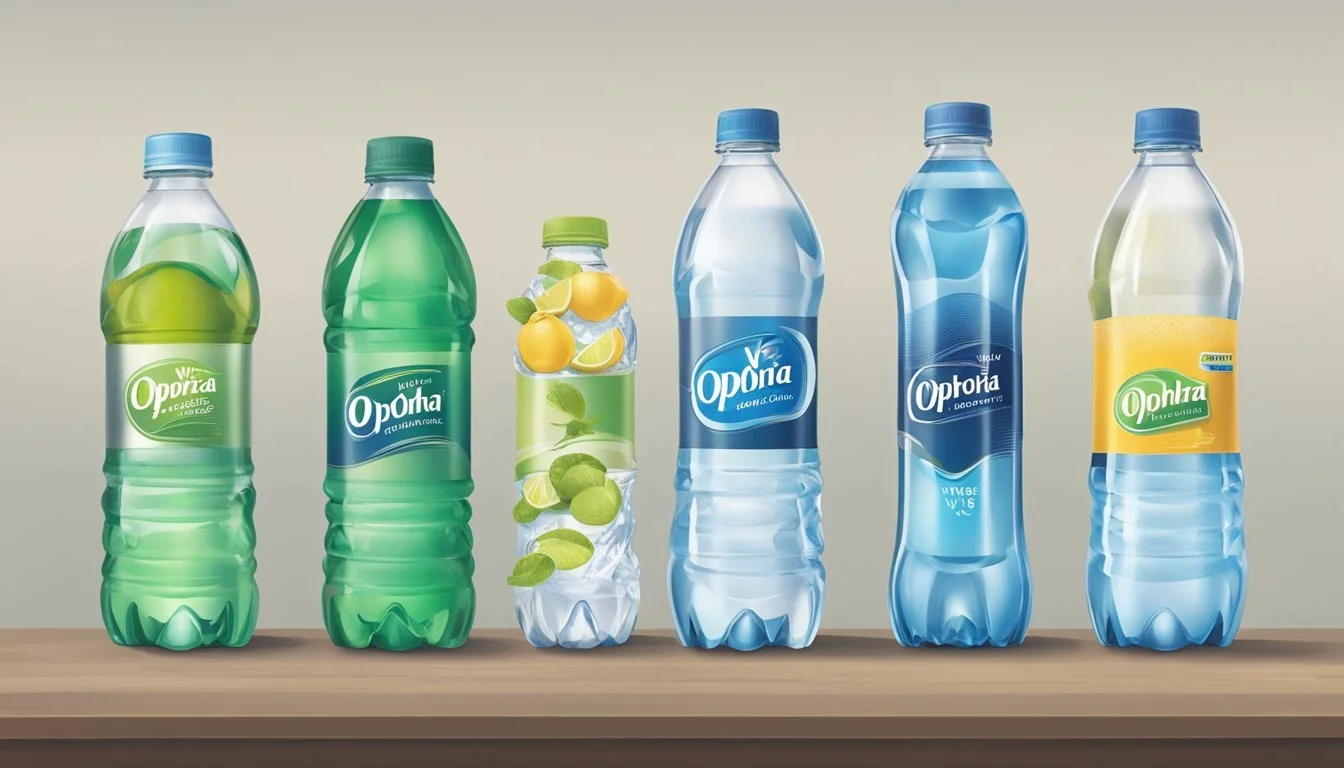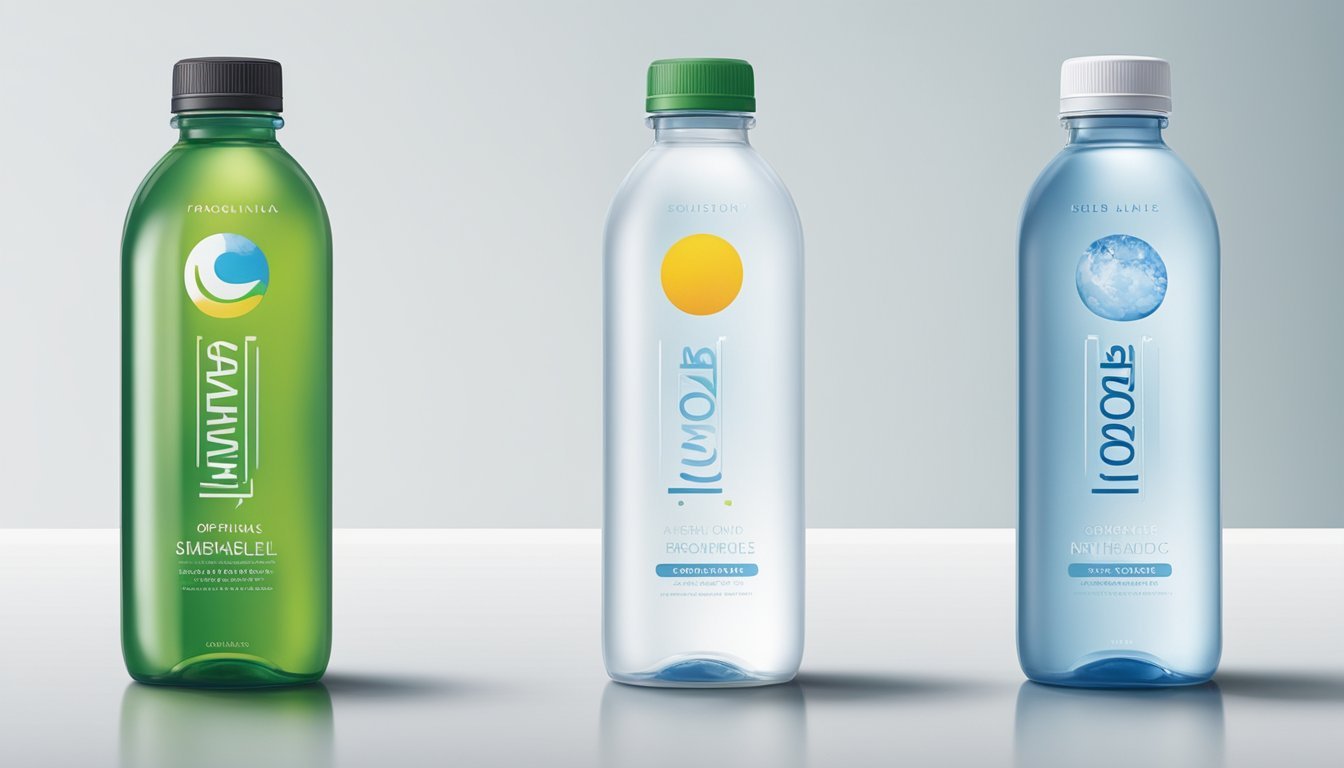The Well vs. Ophora
A Comparative Analysis of Premium Bottled Waters
When choosing between premium bottled waters, The Well and Ophora stand out as distinct options. Both claim to offer superior hydration experiences, but discerning which is truly better for your needs can be challenging.
Ophora sets itself apart with its unique oxygenated water, promising enhanced hydration and health benefits. The Well, conversely, prides itself on sourcing from pristine natural springs, emphasizing purity and crisp taste. Both brands cater to those looking for more than just standard bottled water, making a comparison worth exploring.
Readers looking for the best bottled water to fit their lifestyle or health goals will find this analysis helpful. Explore the key differences in taste, health benefits, and sourcing to make an informed decision.
Water Sources and Types
Water sources and types vary widely, from municipal tap water to specialized bottled water. Each type offers unique characteristics depending on its origin and treatment process, influencing taste, mineral content, and health benefits.
Tap Water
Tap water typically comes from surface sources like rivers, lakes, and reservoirs, or underground sources such as aquifers. Municipalities treat it extensively to ensure safety by removing contaminants like bacteria, viruses, and hazardous chemicals.
Advantages:
Readily available and cost-effective
Strictly regulated by health authorities (e.g., the EPA in the U.S.)
Disadvantages:
Potential for residual taste or odor from treatment chemicals
Occasionally subject to contamination issues or quality concerns
Well Water
Well water is sourced from underground aquifers, accessed by drilling wells. This water is naturally filtered through soil and rock layers, which can affect its mineral content and taste. Artesian well water flows naturally to the surface, often without mechanical pumping, due to pressure from surrounding rock layers.
Advantages:
Naturally high mineral content, which can positively impact health
Typically free from treatment chemicals found in municipal water
Disadvantages:
Variation in mineral content and potential for contaminants without proper testing
Dependence on the geological location and water table
Bottled Water Varieties
Bottled water includes several types, each derived from different sources and undergoing varying levels of treatment.
Spring Water:
Comes from natural springs, often containing minerals from its source
Marketed for its purity and natural taste
Mineral Water:
Contains natural minerals and trace elements
Often sourced from underground reservoirs and minimally treated
Carbonated Water:
Infused with carbon dioxide gas, creating bubbles
Can be natural (e.g., sparkling spring water) or artificially carbonated
Brands:
Ophora: Known for its luxury branding and health-oriented benefits due to its specialized production process.
The Well: Specific brand details would vary based on market offerings and unique features.
Advantages:
Convenient and widely available
Diverse options catering to different tastes and health preferences
Disadvantages:
Often more expensive than tap or well water
Environmental impact due to plastic waste
Choosing the right type of water depends on individual preferences, health considerations, and environmental impact awareness.
Health and Safety Standards
Understanding the health and safety standards of bottled water is crucial for making informed choices between The Well and Ophora. Key areas of focus include regulation by the EPA and FDA, testing for contaminants, the environmental impact of water sources, and the overall safety of drinking water.
EPA and FDA Regulation
Both The Well and Ophora must comply with stringent regulations overseen by the Environmental Protection Agency (EPA) and the Food and Drug Administration (FDA). The EPA manages standards for tap water under the Safe Drinking Water Act, which are adopted by the FDA for bottled water.
The FDA also enforces good manufacturing practices specific to bottled water, ensuring that it meets the same quality and safety standards as municipal water. Adherence to these rules helps mitigate health risks associated with contaminants such as bacteria, heavy metals, and chemicals.
Testing for Contaminants
Bottled water companies, including The Well and Ophora, perform rigorous testing to ensure their product's safety. According to FDA regulations, bottled water must undergo multiple tests per day, checking for contaminants like coliform bacteria, arsenic, and other harmful substances.
These tests are often more frequent than those mandated for tap water, providing an additional layer of security. This frequent testing helps identify and address any possible health risks, ensuring that the water is safe for consumers, including vulnerable populations like children.
Environmental Impact of Water Sources
The source and extraction methods for bottled water impact its environmental footprint. Both The Well and Ophora must consider the sustainability of their water sources and the potential ecological disruption caused by extraction.
Artesian wells, springs, and other natural sources must be managed responsibly to avoid depletion and contamination. Companies must also ensure that their operations do not negatively affect local ecosystems, following both federal and state environmental regulations to maintain water quality.
Safety of Drinking Water
Ensuring the safety of bottled water involves monitoring for microorganisms, viruses, and chemical residues. Companies like The Well and Ophora employ chlorine and other disinfectants to treat water, reducing the risk of pathogens.
Proper sealing and bottling practices help maintain the safety of the water until it reaches consumers. Regular inspections and compliance with the CDC guidelines further reinforce the measures taken to deliver safe and clean drinking water. This comprehensive approach guarantees that the bottled water remains free from harmful microbes and chemicals, assuring its safety for everyday consumption.
Environmental Considerations
Examining the environmental impact of bottled water brands includes factors like plastic pollution, water source conservation, and regulatory guidelines. Attention to these areas highlights the strengths and weaknesses of The Well and Ophora in terms of sustainability.
Plastic Pollution and Bottles
Plastic pollution remains a pressing issue for bottled water brands. The Well uses high-density polyethylene (HDPE) for its bottles, which is more readily recyclable compared to polyethylene terephthalate (PET) used by many competitors.
In contrast, Ophora prides itself on premium packaging, which often includes glass bottles. While glass is recyclable and environmentally friendly, it’s heavier to transport, leading to higher carbon emissions. Both brands could improve by enhancing the recyclability of their packaging materials.
Water Source Conservation
The source of the water is another critical environmental factor. The Well sources its water from artesian wells, ensuring the protection of natural aquifers.
Ophora focuses on ultra-purified water derived from various sources, including municipal supplies. Despite the sophisticated purification process, concerns arise about the sustainability of these sources. Preservation efforts and controlled extraction practices are essential to prevent depletion and maintain the balance of local ecosystems.
Regulatory Bodies and Environmental Protections
Both brands must adhere to regulatory standards to ensure their operations do not harm the environment. The Environmental Protection Agency (EPA) provides guidelines on water quality, pollution control, and sustainable practices.
The Natural Resources Defense Council (NRDC) also offers oversight, particularly in the context of protecting water sources and minimizing environmental impact. Additionally, third-party organizations like the Environmental Working Group (EWG) review and rate these practices, fostering transparency and accountability. Compliance with these regulations ensures that both The Well and Ophora pursue environmentally responsible operations.
Economic and Practical Considerations
When evaluating The Well and Ophora, key economic and practical factors include cost, convenience, and availability. These aspects determine which bottled water brand best fits different consumer needs and preferences.
Cost Comparison
The cost of bottled water can significantly influence consumer choices. The Well is generally marketed as a reasonably priced premium water. It caters to consumers looking for quality water without a high price tag. Ophora, on the other hand, commands a higher price due to its specialized production and health-oriented branding.
Brand Average Price (per liter) The Well $2 - $3 Ophora $4 - $7
Ophora's higher cost can be attributed to its unique filtration processes and added health benefits, which include higher alkaline levels. Consumers must weigh the benefits against the higher price point when making a decision.
Convenience Factor
Convenience is a major factor when selecting bottled water. The Well offers a practical solution for daily hydration needs. Available in various sizes, ranging from small bottles to larger family-sized options, it makes daily consumption easy.
Ophora targets a niche market that prioritizes health and luxury. Its packaging often reflects this, featuring elegant designs that may be less practical for everyday use. Though stylish, the emphasis on luxury can sometimes mean less focus on convenient portability.
Availability and Accessibility
The Well is widely available across supermarkets, convenience stores, and online retailers, making it easily accessible to a broad audience. Its distribution network ensures that consumers can purchase it without significant effort, enhancing its appeal as an everyday water choice.
Ophora, marketed as a high-end product, is typically found in upscale grocery stores, restaurants, and hotels. Its specialized market positioning means it is less accessible for mass consumption. This limited availability could be a deciding factor for consumers seeking readily available hydration options.
Both brands cater to different market segments, balancing cost, convenience, and accessibility according to their target consumer base.
Consumer Choices and Preferences
When choosing between The Well and Ophora, consumers often consider factors including brand reputation, sustainability practices, and product offerings tailored to both basic hydration and premium taste experiences.
Bottled Water Brands
Consumers have a variety of preferences when it comes to bottled water brands. Ophora is known for its premium quality and advanced oxygenation processes, appealing to health-conscious individuals seeking a superior hydration experience.
The Well, while not as widely recognized, emphasizes natural sourcing and minimal processing.
Traditional brands like Aquafina, Dasani, and Nestle Pure Life dominate the mainstream market due to their affordability and availability. Brands like Fiji and Essentia offer premium options favored for their unique mineral content and taste profiles. Buyer trust significantly influences purchase decisions, with some consumers loyal to long-established brands.
Reusability and Sustainability Choices
Interest in sustainability impacts consumer choices in bottled water. Ophora offers packaging that highlights environmental responsibility, appealing to eco-conscious buyers.
The Well promotes reusable container options, emphasizing reduced plastic waste.
Brands like LIFEWTR and Ice Mountain also participate in sustainability efforts, including recycling programs and biodegradable packaging. The rising popularity of reusable water bottles and eco-friendly alternatives affects traditional bottled water sales. Consumers value transparency in marketing, often gravitating towards brands that clearly communicate their environmental impact and commitment to sustainability.
Case Studies and Incidents
The exploration of bottled water brands includes looking at incidents that highlight the importance of water quality and safety. Such case studies often involve public health crises that illuminate the potential dangers of contaminated water and emphasize the critical need for reliable bottled water alternatives.
Flint Water Crisis
In Flint, Michigan, a public health catastrophe unfolded due to the contamination of the city's water supply. Lead from aging lead pipes leached into the water, exposing thousands of residents to dangerous levels of toxins.
This contamination resulted in numerous health risks, including elevated lead levels which can lead to neurological damage and developmental delays in children.
The use of improper water treatment methods led to increased contaminants such as heavy metals and endocrine-disrupting chemicals in Flint's water supply. Residents reported issues such as skin rashes, hair loss, and symptoms related to diet and inflammation. Extended exposure to such chemicals is linked to chronic health conditions like cancer.
These incidents underscore the critical role of quality bottled water as a safe alternative to compromised municipal supplies, highlighting the significance of choosing brands committed to rigorous safety standards.
More About The Well
Cascade Mountain vs The Well: Which Bottled Water is Better?
Hawaiian Springs vs The Well: Which Bottled Water is Better?
Icelandic Glacial vs The Well: Which Bottled Water is Better?
Mountain Valley Spring Water vs The Well: Which Bottled Water is Better?
Nestle Pure Life vs The Well: Which Bottled Water is Better?
Richard's Rainwater vs The Well: Which Bottled Water is Better?
The Well vs Kirkland Signature: Which Bottled Water is Better?
The Well vs Talking Rain AQA: Which Bottled Water is Better?
Whole Foods Italian Still Mineral water vs The Well: Which Bottled Water is Better?







